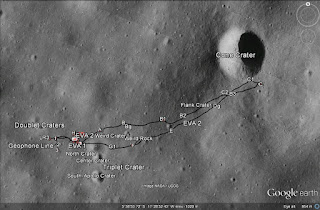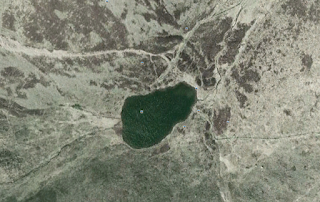After leaving Australia we headed over to Fiji, we landed at Nandi airport in Viti Levu and stayed at Skylodge resort for a night, the next day we headed to Port Denarau and got a boat to Bounty Island, a small island in the Mammanucas. We had to wear a sarong as it was traditional.
Most of the time we would be in the water or sun bathing, whether we went snorkelling, kayaking, diving or simply just swimming in the pool! Pretty much spent the whole week barefoot with wet hair!
The food was great, a couple of nights we had fish (baracuda and shark), it was SO nice! I also had beans on toast one morning for breakfast right by the sea, so now i feel sad whenever i eat beans on toast as it's usually raining and cold when i look outside!
One day we also took an island hopping trip on a catamaran and visited some Fijian school children to sing with them and tell them why staying in school is such a good idea as so many Fijians go on to work in resorts.
This is a birds eye view of the Bounty Island taken from Google Earth.
As the picture shows, the island is surrounded by various reefs and so snorkelling was great, there was a Reef Safari shop on the island run by crazy diver Dean, on our first day he told us we could become certified SCUBA divers in just a few days after 5 logged dives and an exam. Me and James decided to do it and became dive buddies! Scuba Schools International ftw!
A few snaps from learning to dive:
Me and James learning to set up our gear! Burger With Relish and Fries (BWRAF)
Me in my dive gear ready to start a 3 hour skills session in the pool!
Backwards entry, much scarier off of a little motor boat!
Me, James and diver Dean about to go down and practice underwater skills.
Down we go!
We had to do several things to get our SSI open water diver status, first we had to learn how to set our gear up, then practice various skills in the pool, then do 5 logged dives and pass a multiple choice exam.
Some of the skills we learnt were: to empty our masks of water, equalising pressure, taking our masks off and putting them back on, emergency ascent, retrieving the regulator and the procedure for being out of air, amongst many other things! Diving is definately more complicated than i used to think!
The five logged dives we went on were amazing! We did dives from the shore and boats, our first ever dive was a from the shore dive and the ocean was quite rough and so visibility was quite poor. We could not see a thing on the way out to the reef, we just had to follow a rope, it was a little scary because we were new to using our gear and sharks tend to hunt in such conditions using them as cover.
Unfortunately we did not have an underwater camera to play with so i can't post pictures of the amazing things we saw, but SCUBA diving in Fiji is just as good as Australia!
Here are a few pictures of things we saw, from elsewhere on the internet:
The amazing Fiji clownfish, we saw these guys everywhere!
This kind of coral was brilliant for swimming over, if you stop right in the middle and stay still then all the fish will swim out right up to your mask, just be careful not to cut yourself on the coral!
We saw these little fish when we went snorkelling on the catamaran trip, if you put your hand out they swarm around it and start biting it (not painfully), hilarious fish!
Blue sea stars, we saw them everywhere as they stood out against the coral they were on.
The amazing lionfish, definately a beautiful animal, but also very poisonous, our dive instructor went right up to it, but he was a little bit strange!
We saw sea cucumbers, many kinds of fish (including many fijian clownfish), blue sea stars, amazing corals (plenty of which released stinging spores) and lots of anemones! One of the best things we saw was a lionfish that lived on Love Reef, it was always just under our boat when we dived in backwards, one of the coolest things i've seen! I even managed to lose my instructor and buddy at one point because i saw a really cool, big buuterfly fish that i followed through a coral tunnel!
In the end after a week of practising, we both passed and got our open water diver status!
We even took a photo in celebration, awesome! Or cool bananas as diver Dean would say :)
Some highlights from the rest of the trip:
The outdoor area in Skylodge resort, Nandi, not a bad place!
More of the resort, there were plenty of toads hopping around this area.
Welcome to Bounty Island! It was super warm regardless of the rain!
They loved to sing for everyone, BOUNTYYYYY ISLANDDDDDD (8)
One of the turtles from the island's conservation program, amazing animals!
One of the many intense games of ping pong we played that week! The old man was pretty good.
Chilling out next to the ocean, 'studying' for our dive exam.
Bounty Island punch, man i miss drinking this! Raspberry, pineapple and ice cream were just a few of the ingredients.
The path leading down from our rooms, beautiful views, there were even hammocks to sleep in.
Scary poles were all over the island! They looked a little totem pole inspired.
Some more scenery of the fantastic beach!
The ocean with a typical Fijian boat.
View of the ocean from the pool on a VERY hot day.
The day we all went out sailing on a catamaran and got absolutely roasted, we got to do some amazing snorkelling though!
View of Bounty Island when we were off on one of the boat trips, spot the reef and where we used to eat everyday.
The day we went to an island to visit one of the local Fijian villages.
Stunning views of the island and clear aquamarine waters, paradise!
Part of the village, the chief's house is the one with the big roof, we had an introduction ceremony with him where we all had to drink Kava.
Shopping! I've never said bula (Fijian for hello) so many times in my life!
The school children singing for us, adoreable!
Trip to a deserted island, mainly for sunbathing and swimming purposes :D
Some of the island.
It took ocean views to a new level!
Our attempt at building a hermit crab arena, the little things were everywhere.
Hermit crab up close :)
Group photo of the New Zealand and Australia volunteers!
Me, Lucy and Matt on Bounty Island.
Matt, me and James on Bounty Island.
Us back in Sydney before departing for London, our last journey together after travelling 47564376573465348 miles in 5 weeks, sad times!
Going to Fiji was an amazing experience as their culture is so different from ours and of course the weather and scenery is pretty amazing! Fiji was also much cheaper than Australia and even than the UK, tobacco and alcohol were very cheap indeed!
The people were also amazingly friendly, particularly to those from the UK, even though the queen has now excluded them from the commonwealth due to a new political regime. There was never enough the resort workers could do for you and people everywhere would say bula to you, making us all feel at home.
It is definately a great place to go for any fellow SCUBA divers! If you have a problem with water or boats it is probably not the best destination for you, although one of my friends was a bit scared of water as she couldn't really swim and she was okay, but she had to miss out on snorkelling/diving/kayaking/swimming, which were some of the best things about the trip.
Fiji was definately a 10/10 experience :)

































































